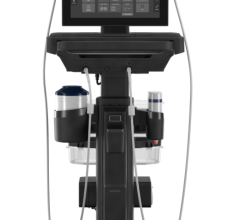January 6, 2016 — DICOM Grid announced at the 2015 Radiological Society of North America (RSNA) annual meeting that Stanford Children’s Health and Weill Cornell Medicine are part of the latest wave of providers to adopt the DICOM Grid platform. Both organizations use the newest features of DICOM Grid to breakdown communication barriers across provider networks and optimize the patient experience by eliminating the need for repeat scans, reducing patient wait times and enabling white-glove consultation services online.
Additionally, their ability to exchange medical image data will now be even more seamless as DICOM Grid becomes one of the first organizations to commit to the RSNA Image Share Validation Program, a new initiative designed to expand access to medical imaging and diagnostic reports.
Consolidation continues as a mega-trend in the healthcare industry, with U.S. hospital mergers and acquisitions tracking at their highest rate since 1999. Efficient medical image management becomes exponentially more challenging in this landscape as new entities cause system proliferation with no uniform, consolidated view of a patient’s diagnostic imaging history. The result is often costly repetition of scans, increased patient wait-times and an incomplete patient history, all while IT departments work furiously to patch together disparate, on-premise image management systems using cumbersome, outdated technology like VPN and FTP.
DICOM Grid’s modern, cloud-based, comprehensive medical image management suite eliminates the constraints and complexities of an on-premise architecture. For example, a key challenge when consolidating providers into a health system network is how to integrate the diagnostic imaging infrastructure in a rapid and cost effective manner. DICOM Grid’s new cloud PACS-to-PACS (picture archiving and communication system) gateway offers a path forward. Deployed cost effectively over the Internet to healthcare organizations of all sizes, the DICOM Grid platform rapidly incorporates providers into a health system’s care network.
As health systems look to differentiate, an emerging trend is the development of branded, second opinion programs that allow global access to leading specialists via an Amazon-like online experience. DICOM Grid’s new Second Opinion module guides patients and referring physicians through an intuitive, step-by-step process of uploading their images within a HIPAA-compliant, online portal for a specialist at the provider organization to review. Finally, DICOM Grid’s new zero-footprint, HTML 5 universal viewer enables access to imaging across departments, speeding up critical communication among medical staff and reducing patient time-to-care.
Stanford Children’s Health, a pediatric and obstetric center of excellence, has adopted DICOM Grid to power imaging beyond the local hospital network; all diagnostic imaging leaving and entering the hospital will bemanaged via DICOM Grid’s cloud suite. DICOM Grid’s ability to interface with local imaging systems and Epic electronic medical record (EMR) ensures data consistency between imaging and non-imaging clinical data.
Announced at the start of RSNA 2015, the RSNA Image Share Validation Program is a new initiative to encourage the adoption of standards for image exchange. DICOM Grid will be one of the first organizations to participate in the pilot program that involves testing conducted by initiative collaborators including RSNA, the Sequoia Project — who are responsible for several national interoperability initiatives — and the Mallinckrodt Institute of Radiology (MIR) at Washington University in St. Louis.
For more information: www.dicomgrid.com


 April 23, 2024
April 23, 2024 








